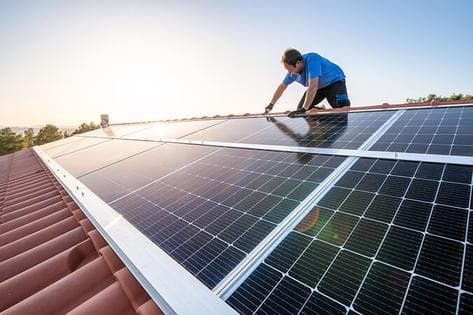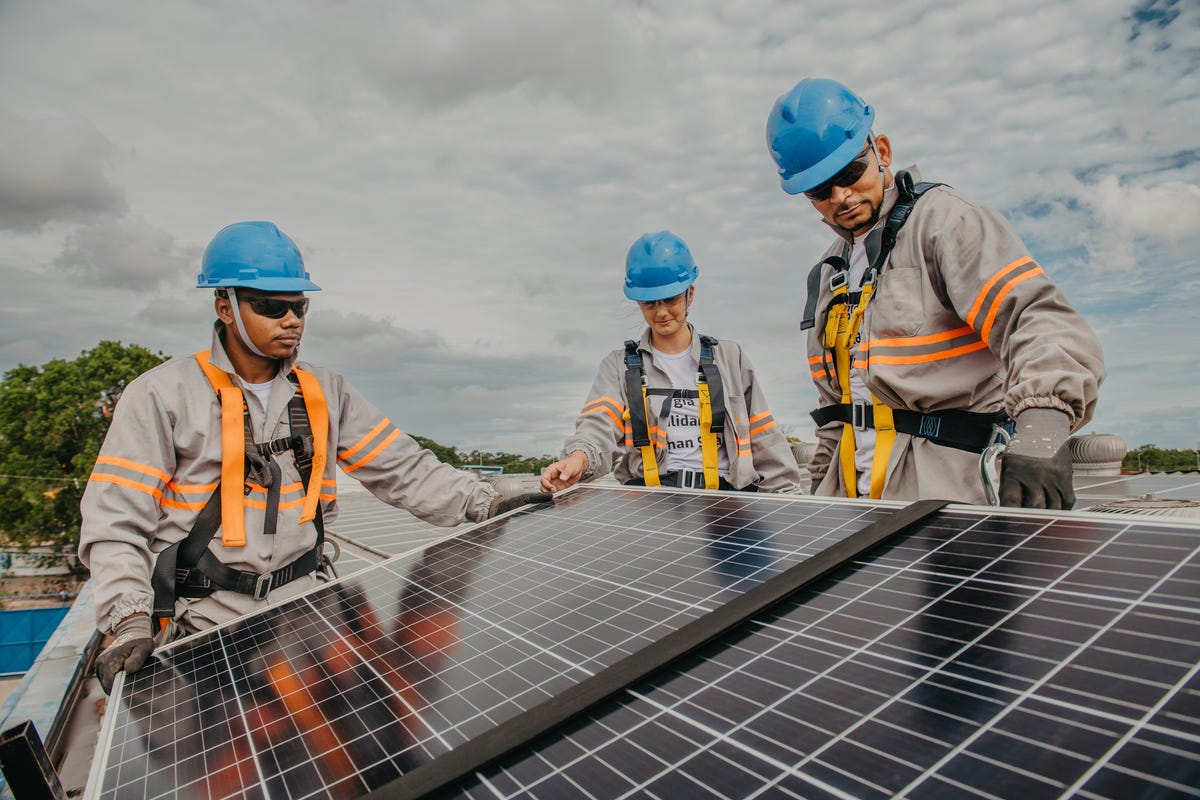Home Solar Services PA: Our Firm Concentrates On The Installation And Management Of Photovoltaic Energy Systems
History and Development of Solar Panel Companies
The inception of photovoltaic panel companies can be traced back to the 1800s when Alexandre Edmond Becquerel discovered the photovoltaic impact. Would he have thought of how his discovery would revolutionize the method we harness energy?
Early Starts

In 1954, Bell Labs established the very first useful solar battery. This marked a substantial milestone in the history of solar power. They were at first used to power area satellites, however who knew this was just the start?
Development and Growth
- In the 1970s, an energy crisis led to increased interest in sustainable energy sources, including solar energy.
- By the 1990s, developments in technology and increasing environmental awareness resulted in the growth of solar panel companies globally.
A New Period
As we entered the 21st century, the solar industry witnessed an exponential development. The demand for tidy and sustainable energy brought about a new period in the solar panel market.
Remarkable Facts
- The world's first solar power station was constructed in 1982 in Hisperia, California.
- By 2019, solar power had become the world's fastest-growing source of power.
The journey of solar panel business has been amazing, hasn't it? The future holds enormous capacity, with constant improvements leading the way for a sustainable future. Can we envision a world powered totally by solar energy?
Moving Forward
Today, photovoltaic panel business continue to innovate, striving for more efficient and economical options. The development of solar power has actually come a long method, and yet, the journey has actually just begun.
The Core of Photovoltaic Panel Production
Ever question what goes into creating those shiny, sun-loving solar panels? The procedure is as remarkable as the end item (Solar Installers Pennsylvania). High-purity silicon, the primary ingredient in photovoltaic panels, goes through various transformations to ensure its performance and toughness
From Sand to Silicon
Crystalline silicon, the backbone of many photovoltaic panels, stems from basic sand. It's an interesting journey, isn't it? The sand undergoes a high-temperature response with carbon to form silicon. This isn't simply any silicon. The silicon used in solar panels is "solar-grade," with a purity of 99.9999%. It's this purity that allows the panels to efficiently convert sunlight into power.
Ingot Formation
As soon as the silicon is pure enough, it's time to form ingots. Photo a big, cylindrical block of strong silicon. How is this achieved? Through a process called Czochralski process, where the silicon is melted and after that slowly recrystallized. It's a sluggish dance of science, resulting in a solid item that is nearly as pure as the raw silicon itself.
Slicing into Wafers
The ingots are then sliced into wafer-thin pieces, like slicing a loaf of bread. Each slice is a potential solar cell, waiting to harness the power of the sun. Did you understand that the silicon wafers are only about 200 micrometers thick? That's about half the thickness of a human hair! The process requires precision and patience, but the outcome is a set of wafers ready to be developed into solar batteries.
Producing Solar Cells
With the wafer prepared, it's time for the magic to occur. The silicon wafer is 'doped' with other components like phosphorous and boron to develop an internal electrical field. It's this field that enables the conversion of sunshine into electrical power. Complex, isn't it?
Assembly and Quality Assurance
Solar cells resemble puzzle pieces that come together to form a photovoltaic panel. The cells are soldered together in a grid-like pattern, then covered with a protective layer of glass. The final action involves strenuous quality assurance checks. After all, it's vital that every solar panel carries out at its peak, would not you concur?
Insider Pointer
Always keep in mind that even the most optimally made photovoltaic panel can lose efficiency due to dirt and particles accumulation. Regular cleansing can considerably enhance your panels' efficiency.
Comprehending the Environmental Effect of Solar Panel Business
Ever contemplated the ecological footprint of a solar panel business? Green innovation, such as solar, has transformed our energy landscape, however what about the behind-the-scenes effect?
The Manufacturing Process: A Double-Edged Sword
The manufacturing procedure for solar panels requires a considerable quantity of energy. This process, called 'em bodied energy', can be seen as a kind of 'energy debt'. It's a little like obtaining today's sunshine to power tomorrow's energy requirements. However fret not, the energy repayment time is often much shorter than website you 'd think!
- The energy payback duration for solar panels is usually 1-4 years.
- After this duration, the energy produced is basically carbon-free.

Life After Decommission
And what happens when a photovoltaic panel reaches the end of its life-span? Can it just be tossed into the trash? No, that wouldn't be really green, now, would it?
A feasible solution is recycling. While solar panel recycling is still in its infancy, it holds a world of potential. Recycling not just keeps products out of landfills but also lowers the requirement for new raw products.
Responsible Sourcing: More Than A Buzzword
Where does the silicon come from, you ask? The industry's need for silicon and rare minerals can lead to harmful mining practices. Responsible sourcing is therefore necessary to decrease harmful environmental effects.
Minimized Carbon Emissions: The Bigger Picture
Let's not forget the larger photo: solar energy substantially reduces carbon emissions. Once set up, solar panels generate tidy, renewable energy, offsetting their preliminary production footprint.
In other copyright, the environmental impact of solar panel companies is an intricate issue. With responsible practices, the promise of a cleaner, greener future is well within our grasp.
Financial Efficiency and Market Share of Photovoltaic Panel Companies
Ever questioned why some solar panel companies - Residential Solar Panels PA outperform others in the market? What sets them apart? The crucial depend on their financial efficiency and market share
Financial Efficiency: A Critical Indication
Financial efficiency plays a pivotal role in the success of any business. For photovoltaic panel companies, it's no various. Strong financial performance allows these companies to invest in advanced innovation, research study, and advancement, thereby creating premium, efficient photovoltaic panels.
But how do they accomplish this? With a focus on expense performance and tactical investments. Companies that handle to reduce production costs without jeopardizing on quality tend to fare better in the market.
Market Share: A Measure of Success
Market share, on the other hand, is a direct reflection of a company's appeal amongst customers. A high market share suggests more property owners are picking their solar panels over rivals.
What's the secret dish for getting a larger market share? It comes down to customer satisfaction and brand track record. Companies that prioritize customer needs and maintain a positive brand image are most likely to record a bigger share of the marketplace.
- Customer Satisfaction: Solar panel companies that deliver dependable products and exceptional client service tend to have greater customer satisfaction rates.
- Brand name Reputation: A strong brand track record is developed with time through constant delivery of quality products and services.
Financial Efficiency and Market Share: The Cooperative Relationship
Surprisingly, the relationship in between monetary performance and market share is not one-sided. They feed off each other. A strong financial performance can increase a company's market share, while a high market share can enhance financial efficiency.
As a photovoltaic panel company, stabilizing these 2 elements is vital for long-lasting success. A business that overlooks either of them may find it hard to preserve its position in the competitive solar industry.
The Takeaway
So, what does all this mean for you? Whether you're a house owner seeking to install photovoltaic panels or a financier considering the solar industry, understanding the financial performance and market share of photovoltaic panel companies is necessary. They are key signs of a company's health and capacity for future development.